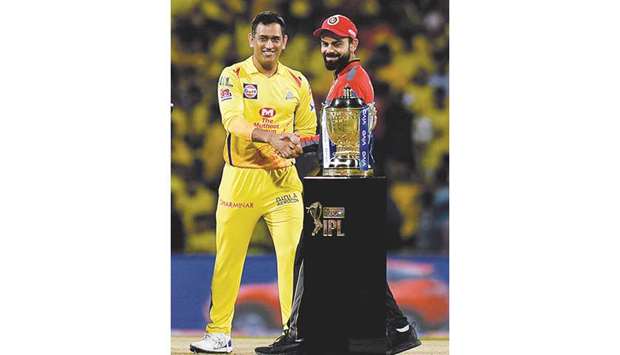Long before anyone had dreamed of the IPL’s glitz and glamour, a provincial cricket tournament played in India’s searing summer heat brought some of the country’s greatest cricketers to national prominence.
The annual Sheesh Mahal tournament in Lucknow ended after 59 years in 2010, just as the Indian Premier League began luring famous players from around the world with cash and top-class competition.
But some of those playing in next month’s coronavirus-delayed IPL, such as former India captain Mahendra Singh Dhoni, still owe a debt of gratitude to Sheesh Mahal.
The 39-year-old Dhoni has led his country to win World Cups and is one of the country’s most recognisable, and richest, sports stars.
However, the wicketkeeper-batsman first came to attention as an 18-year-old at Sheesh Mahal, scoring a stroke-filled half-century for Central Coalfields Limited.
The heat is on
The tournament was played each summer in the northern city of Lucknow, a time when India’s millions of fervent domestic cricket fans were usually starved of their favourite sport.
Games started at 6am to escape the worst of the heat in a city where the summer mercury tops 45C (113F).
When Sheesh Mahal was at its peak, corporate teams attracted top players including past India captains Mansoor Ali Khan Pataudi, Kapil Dev and Bishan Singh Bedi.
The tournament started in 1951, the brainchild of M Askari Hasan, a cricket afficionado from an elite family in Lucknow, the so-called “City of Nawabs (kings)”.
A solid all-rounder in his playing days, Hasan had held top posts in the Uttar Pradesh Cricket Association.
He started the event with two-day and three-day matches but it gradually switched to a 50-over format, taking his cue from the Kerry Packer-sparked growth of the one-day game in the late 1970s.
By the time stumps were drawn for the last time 10 years ago it had become a 20-over event.
Teams came from as far afield as the United Arab Emirates, playing only for the love of competitive cricket and a trophy at the end — there was little prize money.
But a good performance in the Sheesh Mahal could start a young player on the path to national recognition.
“Even the Test players were not paid. The clubs paid for their star players’ travel and hotels,” Uttar Pradesh state cricketer Ashok Bambi, who played in Sheesh Mahal for 28 years, told AFP.
“It was all about playing cricket. It was a different era.”
One of India’s all-time greats, spinner Bedi played for five years for a team from his home city of Amritsar.
‘One-man show’
“I was not an established cricketer at that time and the tournament gave us very good exposure. It was a good learning curve,” Bedi said.
“It was a beautiful atmosphere to play cricket. It was just pure cricket — the way it should be.”
Bambi said that the Sheesh Mahal saved the career of many players.
“A team came from Rajkot in 1969 which had Ashok Mankad and Eknath Solkar in it and they performed and soon got into the Test side,” Bambi noted.
He said Navjot Sidhu’s “second coming” in the national side could also be credited to the tournament.
Playing for a team formed by industrialist Subroto Roy, Sidhu scored two hundreds and got “back in national reckoning”.
Former India opener Virender Sehwag played the tournament as a 17-year-old and later for a team owned by Indian industrialist Subroto Roy.
“There was little cricket in the summer then and wherever you got a chance you played and Sheesh Mahal was one such opportunity,” Sehwag told AFP.
The “big players” were an added attraction, he added, highlighting Raman Lamba and Manoj Prabhakar.
Pataudi, M L Jaisimha, Farokh Engineer and Salim Durrani were others who played Sheesh Mahal during their careers.
Hasan kept the tournament going past the turn of the century, but began running into problems as Twenty20 cricket emerged as a money-spinner and demands grew on international players.
Sheesh Mahal was not played from 2002 to 2004 and Hasan’s death in 2007, coupled with sponsors unwilling to come forward and the culture of club cricket fading, led to its eventual demise.
“It was a great show hosted by Mr. Askari and was recognised as one of the best tournaments in India,” said the Cricket Association of Lucknow vice-president Baqar Imam.
“If you ask me it was a one-man show by Mr. Askari and after his death it could not carry on.”

In this March 24, 2019, picture, Chennai Super Kings captain Mahendra Singh Dhoni and Royal Challengers Bangalore captain Virat Kohli (right) shake hands beside the IPL trophy in Chennai. Dhoni is among the stars who credit Sheesh Mahal tournament in Lucknow for their success. (AFP)
